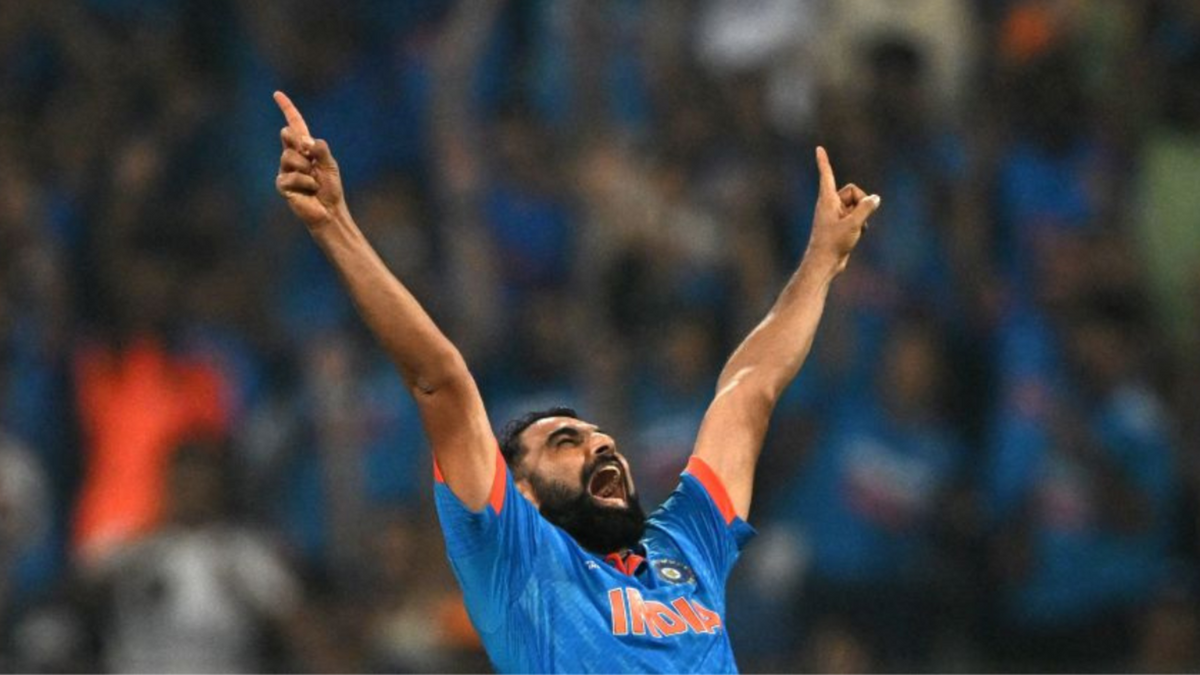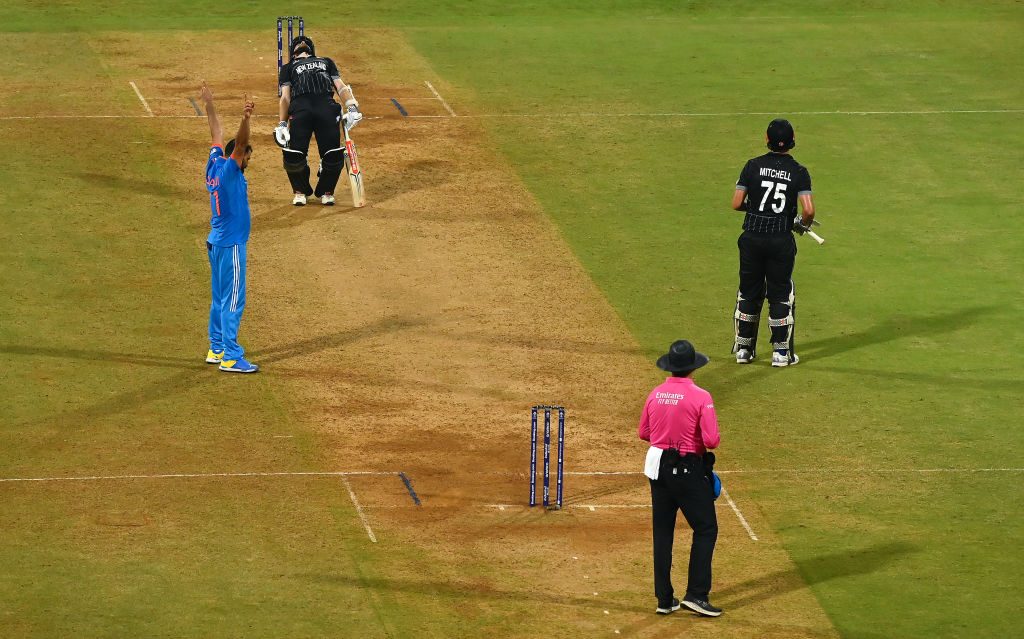
No.2 in Wisden’s men’s ODI spells of 2023 is Mohammed Shami’s 7-57 in the World Cup semi-final against New Zealand. Naman Agarwal looks back at one of the most memorable spells in World Cup and Indian ODI cricket history.
Subscribe to the Wisden Cricket YouTube channel for post-match analysis, player interviews, and much more.
Wisden’s men’s ODI spell of 2023, No.2: Mohammed Shami – 7-57 (9.5)
India vs New Zealand
ODI World Cup, Semi-final
Wankhede Stadium, Mumbai, November 15
New Zealand had long been India’s Kryptonite in ICC events. The 2021 T20 World Cup, the 2021 World Test Championship final – you name an India vs New Zealand clash from an ICC tournament in the last couple of decades and you would almost invariably find the Blackcaps causing unexpected heartbreak.
No heartbreak, however, was quite like the one they had inflicted on India in the 2019 World Cup semi-final in Manchester. ‘Five for three’ were words that became an entire nation’s nightmare. The image of MS Dhoni falling inches short of his crease as Martin Guptill’s throw hit the bullseye became a trigger that every Indian avoids looking at if they come across it even today.
Which is why, when the fixtures for the semis were confirmed at the 2023 World Cup, and India were pitted against New Zealand, there was one collective sentiment that ran across the Indian cricket fandom: payback.
In 2019, Mohammed Shami had not made the XI for the semi-final despite picking up 14 wickets from the four league games he had played. Bhuvneshwar Kumar, the first-choice seamer whom Shami had replaced mid-way through the tournament due to an injury, was fit and India valued incumbency over current form.
Shami’s 2023 campaign had started under similar circumstances. Hardik Pandya’s injury forced his inclusion in the XI, and like the previous World Cup, Shami had hit the ground running, picking wickets for fun. There were murmurs of Pandya’s return before every game, before he was eventually ruled out of the tournament. This meant that along with the context of India looking to avenge their 2019 defeat, the game also had the subtext of Shami aiming to make the statement that not picking him four years back might have been a mistake.
Shami himself, however, wouldn’t have envisioned the statement to come through like it did.
On the flattest of Wankhede tracks in the afternoon, India had put up 397 runs on the board after there had been concerns about the home team swapping pitches to suit their spinners. Virat Kohli had scored his 50th ODI ton, Shreyas Iyer had scored one in 67 balls. India felt safe. Never had a such a total been breached in a World Cup knockout game. Scratch that filter. Only once had such a total been breached in the history of men’s ODI cricket.
Shami, bowling first-change like he did throughout the tournament till that point, was introduced as early as the sixth over. His first ball? A perfect zero-seam away-nipper from around the wicket to Devon Conway to catch his outside edge and send him packing. His tenth ball? A near replay of the Conway dismissal, only this time the victim was Rachin Ravindra, New Zealand’s find of the World Cup. The redemption arc looked well and truly on its way to completion. Until Daryl Mitchell and Kane Williamson decided to stall that process.
The experienced duo complemented each other almost perfectly as Williamson ticked the strike over while still going at close to run-a-ball, and Mitchell took the attack to India.
 Mohammed Shami celebrates the fall of a New Zealand wicket in the 2023 World Cup semi-final. (Photo by Alex Davidson-ICC/ICC via Getty Images)
Mohammed Shami celebrates the fall of a New Zealand wicket in the 2023 World Cup semi-final. (Photo by Alex Davidson-ICC/ICC via Getty Images)
Excessively high scores often give you a false sense of comfort while defending. As the chasing team stitches together a partnership, you often fail to realise when the equation has changed from near-impossible to somewhat-possible and from somewhat-possible to definitely doable. From 352 off 40 overs, Mitchell and Williamson had brought it down to 179 off 18 with eight wickets in hand.
Discomfort started to grow among the host team and their fans. Rohit Sharma had gone back to Jasprit Bumrah in the 29th over in the hope of breaking the partnership and Bumrah had produced the chance. Williamson pulled one straight into the hands of Shami at mid-on. But it burst through. The disappointment in his face was evident after the drop. This is not the direction the redemption arc was supposed to head in.
With even Bumrah going for runs following the drop, Rohit turned towards Shami to arrest the rapidly growing momentum that New Zealand had gathered. Two balls in and the arc was back on track. Williamson picked one up off his pads, but didn’t pick it up strongly enough, finding the man at deep square leg. Two more balls, the arc started taking the shape of a complete circle. Tom Latham was caught plumb in front, Shami’s fourth victim of the night and the third left-hander. The dropped catch was a distant memory, a glitch in the matrix that had now been rectified. In just one over, Shami had broken open the tantalisingly poised World Cup semi-final.
New Zealand still had the centurion Mitchell and the dangerous Glenn Phillips at the crease. They added 75 in the next 10.1 overs, but the break in momentum that Shami’s two wickets brought meant that the definitely doable equation was back down to nearly-impossible: 103 from 7.1 overs.
Shami returned for one final spell in the 46th over and removed Mitchell with his second ball to complete his five-for: his fourth in his last nine World Cup games. You’d think five wickets in an ODI would quench the thirst of a fast bowler. Not for Shami. Not that night. He finished off the New Zealand tail with the last two wickets to end up with seven, the most an Indian has ever taken in an ODI.
India qualified for the World Cup final. Payback was complete. And life, which has not been easy for him, had just come a full circle for Mohammed Shami.








